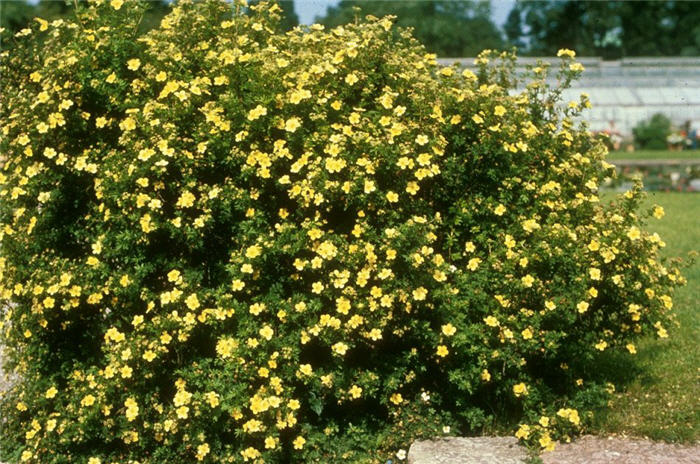| Botanical Name: Potentilla fruticosa | |
| Common Name: Bush Potentilla |

-
Anatomy
-
Culture
-
Design
Plant Type
Shrub
Height Range
1-3', 3-6'
Flower Color
Gold, Orange, Yellow, White
Flower Season
Summer, Fall
Leaf Color
Green
Bark Color
Brown
Fruit Color
Brown
Fruit Season
Winter, Fall, Persistent
Sun
Full, Half
Water
Medium
Growth Rate
Moderate
Soil Type
Sandy, Clay, Loam, Rocky, Unparticular
Soil Condition
Average, Rich, Poor, Well-drained, Dry
Soil pH
Neutral, Basic
Adverse Factors
n/a
Design Styles
English Cottage, Meadow, Mediterranean, Ranch, Spanish
Accenting Features
Showy Flowers
Seasonal Interest
Summer
Location Uses
Perennial Border, Shrub Border, Foundation, Patio, Raised Planter
Special Uses
Hedge, Small Spaces
Attracts Wildlife
Birds, Butterflies
Information by: Stephanie Duer
Photographer: Linda Engstrom, Connon N.
Photographer: Linda Engstrom, Connon N.
-
Description
-
Notes
Bush Potentilla is a small, deciduous shrub growing 1 to 4 feet tall and wide (depending on the variety). It has a dense, twiggy, rounded and mounding habit, with small, green, deeply lobed leaves giving it a fine texture. Flowers appear June until frost, and range in color from a creamy white to yellow, to orange, depending on variety. Flowers are followed by little brown fruit; not very ornamental but they persist into the winter and birds enjoy them. Bark is brown and peeling. Useful for perennial, shrub, or foundation borders. Many cultivars are available.
Grow in any well drained soil; very adaptive to soil type. Best growth and flowering occur in full sun, though it will tolerate part shade. To keep the plant compact and flowerful, prune to the ground late winter to early spring. They sometimes scorch when planted in front of west or south facing walls because of reflective heat. Making space for some other shrub between the potentilla and the wall will help.